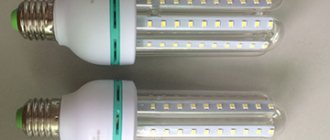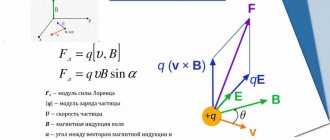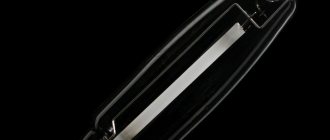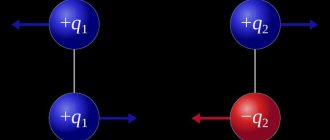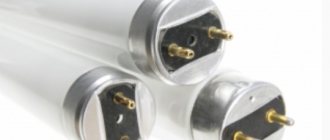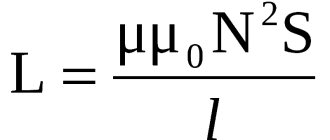07.06.2019
The abundance of different light sources in retail chains, differing not only in price, shape and size of the base, often makes it difficult to choose a suitable light bulb for household use. It is especially difficult for older people who have little understanding of the technical characteristics indicated on the product packaging and live with familiar concepts that have been ingrained since childhood: energy, light power, the brighter a light bulb shines, the “more” watt it contains. However, many do not even know how light is measured.
Modern light sources, based on the use of energy-saving technologies, radically change the established perception of the relationship between brightness and power consumption.
In order not to have difficulty choosing a light bulb when faced with a variety of them on store shelves, read the article. In an accessible form, trying to avoid physical formulas that are difficult to remember, we will try to explain what lighting is and how light is measured. What characteristics of a simple household appliance - a light bulb - should you pay attention to first of all? And how comfort in the home will depend on the right choice.
What is the power of light
For a person who is not familiar with the basic physical quantities that characterize the propagation of photons - light sources in the environment, the intensity of light is determined by the brightness of the light bulb. The brighter it shines, the stronger the luminous intensity is a widely held belief.
In fact, the power of light is not like that. Luminous intensity is a derivative quantity. It is calculated using a formula in which the determining factors are the luminous flux (denoted by the sign Ф) and the solid angle (denoted by the sign ω).
To make it clearer that the intensity of light does not directly depend on the power of the light bulb, let’s give an example: everyone is familiar with the design of a flashlight or spotlight. They use lamps placed in mirror condensers. The power of a flashlight bulb is usually small, rarely exceeding 35 W (halogen). If such a light bulb is used without a condenser in a dark room, then the light intensity emitted by it evenly in all directions will be small. The room will be dark and uncomfortable. To enhance the light intensity, a parabolic mirror condenser is used, which directs the light rays in the desired direction, while simultaneously limiting its spread in all directions.
The intensity of light in the beam of a flashlight (spotlight) will be greater, the narrower the solid angle. This phenomenon of condensation of the light flux in a narrow area allows you to save electrical energy and use low-power light sources to obtain the required illumination.
The luminous intensity is not indicated on the packaging of the light bulbs, since it depends on the design of the lighting device (chandelier, lampshade, sconce). With the same power of two light bulbs located in the same room, the intensity of light emanating from a lamp placed in a parabolic lampshade will be greater than that of a freely hanging lamp.
For those who do not know or have forgotten, let us remind you how light is measured. The unit of measurement is the candela (cd.). Translated from Latin - candle. It corresponds to a luminous flux of 1 lm (lumen) per illuminated surface of 1 sr. (steradian).
Main characteristics of light
A person sees a spectrum of colors - a small part of the range of electromagnetic waves. Its characteristics affect the comfort of the living environment and human well-being. There is a definition for one of the properties - luminous flux (F), which is measured in lumens (lm). The power of the luminous flux of the source characterizes the evoked sensation of light perception. According to its distribution, light flows are distinguished for a closed space: direct, diffused, reflected. The more light, the higher the number of lumens.
Important! This parameter does not determine the intensity, brightness or performance of the glow, because it takes into account the entire diffuse flux. In order to measure the luminous flux it takes a lot of time and it is necessary to take into account the spatial characteristics of the phenomenon.
Basic characteristics of light emissions
The main characteristic of the source is the luminous intensity (I), which determines the intensity of radiation in the direction of the flow. It is calculated through the quotient of the luminous flux (Ф) and the solid angle (ꭥ) in steradians (sr), within which it is distributed. In SI, the unit of luminous intensity, the candela, is denoted cd.
You may be interested in what is phase and zero in electricity
Solid angle
Important! A wax candle emits about one candela (from the Latin candela), and this unit of measurement was previously called a “candle”. The candelas value shows the light emission of a point light source in its most intense direction.
Lamp buyers usually rate brightness by the power consumption (W) of the source. With good brightness, you get a clear and contrasting vision of objects. However, both weak and very bright light is unfavorable for human activity. Brightness (L) is determined by the luminous intensity density in the direction of the surface and is calculated by dividing I by the area of projection onto a perpendicular surface (depending on the cos angle).
The brightness index (L) of light is measured in cd/m². The main characteristic of the perception of light sensation by the eyes is the brightness of the illuminated surface or source.
Light units
Luminous efficiency (H) measures the efficiency of converting electrical power into light. During the transition from electrical energy to light, losses appear, which causes a decrease in the brightness of the radiation. Light output is measured in lumens per watt. You can calculate the luminous flux by knowing the average luminous efficiency.
LED lamps have practical light output (losses less than 5%).
Important! There are quality standards for lighting for indoors, as well as for plants or animals. Illumination is characterized by the ratio of luminous flux to surface area.
Lighting units
What is the luminous flux of an LED lamp
The luminous flux of LED lamps is a characteristic closer to consumer perception. It directly depends on the power of the light source. Essentially, luminous flux is the power of radiant energy perceived by the human eye. Designated in formulas for calculation (Fe)
To understand how the luminous flux of an LED lamp is generated, you need to know its structure. Most household LED lamps have not one, but several LEDs mounted on a heat-sinking board as a light source. Due to the physical properties of this type of semiconductor, they cannot emit much light. To achieve the required luminous flux they are combined into groups. The luminous flux of the LEDs is summed up.
This is how information convenient for buyers appears on the boxes of LED light bulbs: it corresponds to the power of an incandescent lamp N W.
Luminous flux measurement
There is a luminous flux meter called a lux meter. The usefulness of a device for measuring luminous flux is invaluable in cases where there are specified lighting parameters in a room. For example, the illumination of a children's room should be 200 lux (lux), and for bedrooms, living rooms and kitchens an illumination of 150 lux is considered comfortable.
You can rely on the characteristics indicated on the packaging of light bulbs, allowing for a large margin of error. Chinese manufacturers are especially guilty of indicating inaccurate light output data, as they tend to overestimate the characteristics of their products.
Most smartphones are equipped with built-in sensors that automatically change the brightness of the screen depending on the light level. It is enough to install the Luxmeter program on your smartphone to be able to measure the illumination in the room.
Luminous flux unit
Luminous flux power is measured in lumens (lm). 1 lm is equal to the flux of light emitted within a solid angle by a point source with an intensity of 1 cd. (candela).
Defining formulas
The variety of quantities characterizing light sources cannot be understood without understanding the essence of how some physical characteristics transform into others, and what dependencies exist between them. To do this, use several defining formulas:
- Light flow:
- The power of light:
- General illumination:
- Illumination at a specific point on the surface that is not perpendicular to the light source:
- Horizontal surface illumination:
- Vertical surface illumination:
- Luminosity (to determine the amount of light emitted by chandelier shades):
It is a rare consumer who will thoroughly delve into these formulas, calculating the values, before buying a light bulb.
Color temperature of luminous flux
The comfort of being in a room is determined not only by its level of illumination, but also by the shade of light that the light sources emit. This characteristic of light bulbs is called color temperature.
The human eye is more adapted to perceive long-wavelength light, which contains red and orange colors. It perceives short-wave radiation, located in the blue and violet regions of the spectrum, much worse. Light with a bluish tint is perceived by the eye as harsh and annoying. Causes rapid fatigue.
Taking these features into account, manufacturers label all light sources with consumer-friendly names:
- warm;
- day;
- cold.
Essentially, we are talking about a commercial designation for the temperature of the color flow. The lower the color temperature, the more “warm”, visually pleasing light the light bulb emits.
A person’s perception of the same interior (landscape) at different color temperatures is clearly presented in the figure:
PICTURE 1
Differences in image perception depending on color temperature
The difference between illumination and luminous flux
It is extremely easy to explain the difference between these concepts by comparing them with simple physical quantities: pressure and force. Using a small object (a needle) you can create a lot of pressure with a minimum of force. The same is true with light flux. Using a light bulb that provides low illumination, but concentrating the luminous flux in a limited area, you can achieve local illumination tens of times greater than the general one.
It should be remembered that illumination and luminous flux are measured in different units:
- illumination – lux (lx);
- luminous flux – lumens (lm).
Differences from luminous flux power
To understand all the nuances even better, you should understand how luminous intensity differs from luminous flux. This is easiest to do by analogy with such physical quantities as force and pressure.
So, if you apply a certain force to an area of 1 square centimeter, the pressure will be distributed evenly over the surface. But if you take a needle and apply the same force to it, the pressure will concentrate on a tiny area under the point and will be hundreds of times higher. But the effort will remain the same.
Spotlights provide light with great intensity due to the presence of a mirror reflector.
The more the luminous flux is limited in distribution, the higher the indicator of its strength. As for using this factor when choosing a light bulb for a room, you need to remember a few simple tips:
- To illuminate a separate part of the room, it is better to use spotlights or track models that can be directed to the desired location. This option is much more convenient than a chandelier, as it concentrates the light flux in one area rather than scattering it throughout the room.
- The intensity of light largely depends on the shades that are installed on the lamp. Options made of frosted glass and similar materials provide a uniform, diffused background. Fabric structures and other opaque solutions limit the spread of flow and distribute it over a limited area.
- When using lampshades with a reflector, the illumination will be much higher, so you can install lower power bulbs.
Lamps should be selected taking into account the quality of lighting they provide. Different rooms have different requirements, so it is important to take into account the characteristics of each and select those options that will provide comfortable light. Remember that the intensity of light depends on the angle of its propagation, so reflectors and spotlights provide a significant increase in performance.
Typical luminous flux value for various light sources
Typical luminous flux values for light sources depend on their design. The table allows you to visualize how different the luminous flux they generate can be:
TABLE 1
Luminous flux of incandescent lamps generated by various light sources
TABLE 2
Luminous flux table for fluorescent lamps
Comparison of light from different sources
Most often, light sources used in everyday life are subject to comparison:
- incandescent lamps;
- halogen lamps;
- fluorescent lamps;
- light-emitting diode (LED) lamps.
The maximum permissible incandescent lamp in everyday life usually does not exceed 200 W. More powerful lamps become very hot and are a fire hazard. It should be taken into account that the luminous efficiency of various types of lamps is not characterized by power alone.
The luminous flux of a 100 W incandescent lamp is sufficient to create comfortable lighting in a room with an area of 9-12 m2.
The same luminous flux of fluorescent lamps is provided at a power of 40 W.
LED light source is the most economical in terms of energy consumption. The 7 W LED block replaces a hundred-watt light bulb in terms of light output.
Work surface lighting
The requirements for lighting work surfaces are as follows:
- SNiP 23-05-95;
- SanPin 2.2.1/2.1.1.1278-03
The work table should have an illumination of 300 lux, the workplace for precision work should have 500 lux, and 150 lux is enough to illuminate the work surfaces in the kitchen.
Luminous intensity of typical sources:
Source Power, W Approximate luminous intensity, cd Candle 1 Modern (2016) incandescent lamp 100 100 Conventional LED 0.015 5 mcd Ultra-bright LED 1 25 Ultra-bright LED with collimator 1 1500 Modern (2016) fluorescent lamp 20 100
Black Diamond is a trendsetter in the world of professional mountaineering and climbing equipment. The brand produces high-quality headlamps and pendant lamps that can be used even at a depth of one meter underwater for half an hour. BD offers travel lighting with up to 200 lumens of light output and a relatively light weight. Many flashlights are equipped with several lighting modes for ease of use on the mountaineering route and at home. Bright, light, neat and practical, BlackDiamond flashlights will not let you down even in the most extreme situations.
Other lighting characteristics
The characteristics of light were partially discussed in previous sections. For better remembering, let's repeat.
What is candela?
Candela is a unit of luminous intensity (cd). One of the 7 basic units of the SI system. Equals 1 lumen multiplied by 1 watt to the minus first power.
lm x W-1
Lumens and Luxes
As already noted, similar-sounding units are used to characterize different concepts:
- illumination is measured in lux (lx);
- luminous flux is measured in lumens (lm).
Lumen and Watt
Lumen, as a unit of measurement of luminous flux, is not identical to watt, a unit of measurement of power. Despite the fact that in everyday life people often equate the power of a light bulb, expressed in watts, with luminous efficiency , this should not be done. An illustrative example: the equality of the luminous flux emitted by a 100 W incandescent lamp and a 7 W LED lamp.
What is luminous flux
The concept of luminous flux will help determine the properties and quality characteristics of light from an emitter. Using this value, the value of the light intensity falling per unit area is calculated. When performing calculations of lighting systems, this measure is used. There are lighting requirements for various rooms. Simply put, the flux of light is the power with which radiation acts on any surface. The system of units (SI) denotes flux with the letter F, the unit of measurement is 1 lumen (lm; lm).
Results: how to make a choice
Choosing an electric light bulb for household needs is not difficult if the buyer has an idea of what kind of lighting device it will be used in and what level of light output it should provide. The high luminous efficiency of LED lamps allows you to replace any of the previously existing light sources, while significantly saving on energy consumption.
Exceptions are designer “Edison lamps”, which cannot be imitated using LEDs, although some attempts are being made to do this. The thin tungsten filament is replaced with filament luminous rods.

